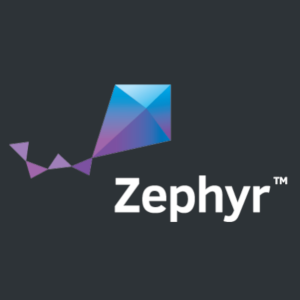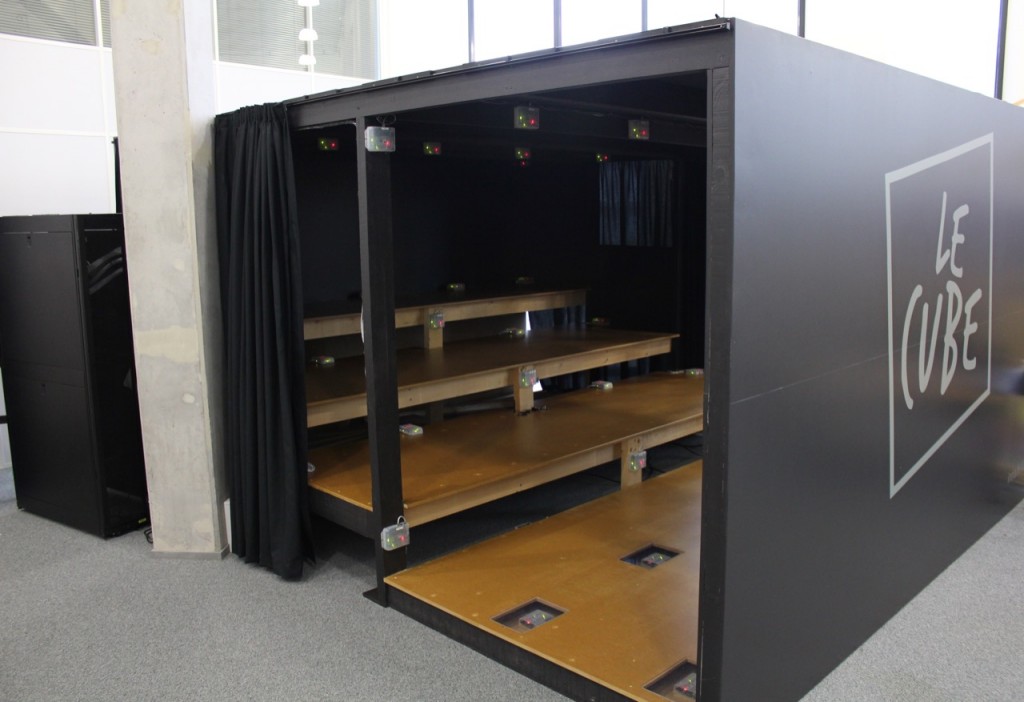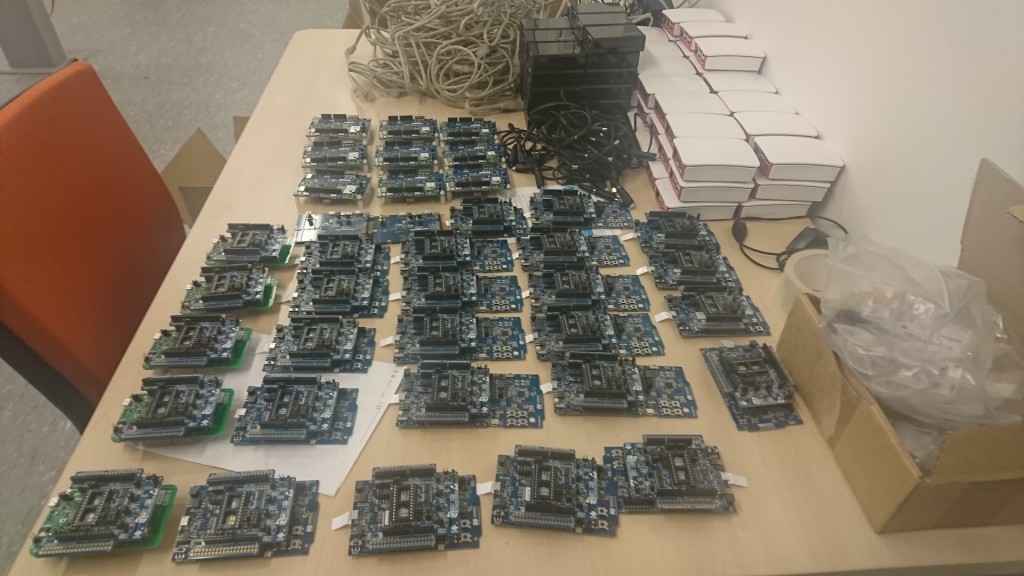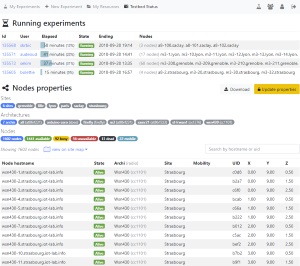Zephyr operating system support
13 Jun 2019

We are happy to announce that FIT IoT-LAB now also provides support for the Zephyr operating system.
The version supported on the tested is the LTS 1.14.0 release from April 2019. The Zephyr SDK is also deployed on every SSH frontend to allow easy builds of Zephyr firmwares for supported boards.
The Zephyr page provides information about boards supported boards and about Zephyr support on the testbed.
New web terminal available on the testbed webportal and websocket CLI tools
19 Mar 2019
![]()
We would like to inform you about new features available that simplify the access to the serial port of FIT IoT-LAB nodes.
Direct access via the testbed webportal
It is now possible to access the serial port of all nodes but the A8 from the experiment details page on the testbed webportal.
Each node in an experiment now provides a terminal icon in the list of supported actions: just click on it and a web terminal pops up with direct access to the serial port of the node.
This makes the user experience as simple as possible when using FIT IoT-LAB via the testbed webportal!
There are things to take into account though:
- The access to the serial port is similar to the netcat access on port 20000 from the SSH frontends: only one TCP connection at a time is possible. This means that you cannot use the web terminal if a TCP connection is already opened using netcat. And vice-versa.
- The serial stream transport uses a websocket connection between the browser and the FIT IoT-LAB web server. For performance reasons, only 2 websocket connections on a single node are allowed at a time and 10 websocket connections per site per user in total are allowed.
This new feature is used in The first experiment for beginners in video of the Learn page.
New websocket CLI Tools
The access to the node serial port via websockets also makes it possible to aggregate serial input/output of nodes from different sites on a single computer. To do this, we released a new CLI tool: the ws-cli-tools.
It is open source, compatible with Python 2 and Python 3 and available on PyPI.
See the Websocket client documentation to learn how to install and use it with the FIT IoT-LAB testbed.
Deployement of Le Cube on Lille site
10 Jan 2019

We are very happy to announce the release of a new location for experimentation boards on the Lille site of IoT-LAB.
We’ve added Le Cube, a space for heterogeneous interoperability & compatibility
For now, we’ve deployed boards that are capable of 802.15.4 in both 2.4 GHz and sub-GHz, boards using BLE, and boards using LoRa. They all coexist in a small vicinity:
- 5 Iot-LAB M3 boards
- 5 Zolertia Firefly boards
- 5 ST B-L072Z-LRWAN1 boards
- 5 BBC micro:bit boards
- 5 Microchip SAMR21 boards
The panel of offered MCUs and radio chipsets is intended to grow (total available is 64), and can include your own boards, just follow our documentation to start, and we’ll be glad to physically plug them in LeCube.
We hope you will enjoy working with this new space.
New boards available on Saclay site
22 Nov 2018

We are very happy to announce the release of a new batch of 46 boards on the Saclay site of IoT-LAB.
With these new boards, the possibilities already provided by IoT-LAB are even more extended:
- The boards are from different vendors: NXP, Microchip, ST, Nordic, Phytec, etc
- The boards provide different radios: 802.15.4, BLE, WiFi, Sub-GHz
The boards with 802.15.4 radio are deployed in the same room in order to allow developers testing wireless connectivity between heterogeneous platforms. Nodes with BLE radios are deployed in another room and are quite close to each other.
For more details on the deployment, please have a look at the Saclay site deployment page.
We recall that adding support for new boards can be done by anyone: just follow our documentation.
We hope you will enjoy working with these new boards.
New Web portal
28 Sep 2018

We are glad to announce the release of our new Web portal.
The new Web portal covers everything from the previous site, with some new features.
What’s new:
- Faster dashboard with live experiments state
- Intuitive ergonomic UI for experiment submission
- Testbed status page with running experiments and nodes properties
- Account management with user profile
Additional features will be added in the upcoming months as we complete them.
The portal is built with the Vue.js framework and leverages a new version of IoT-LAB public REST API.